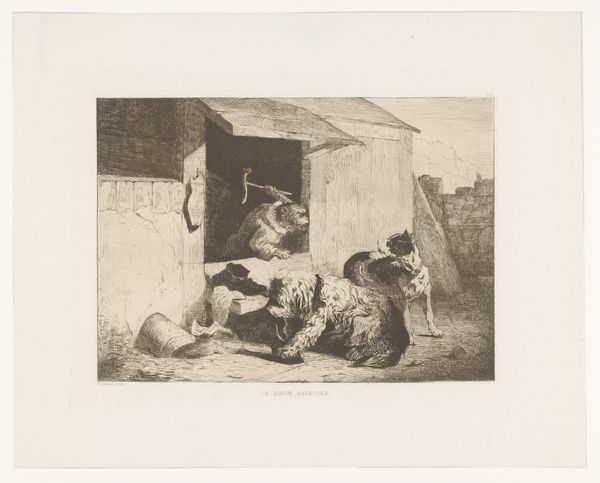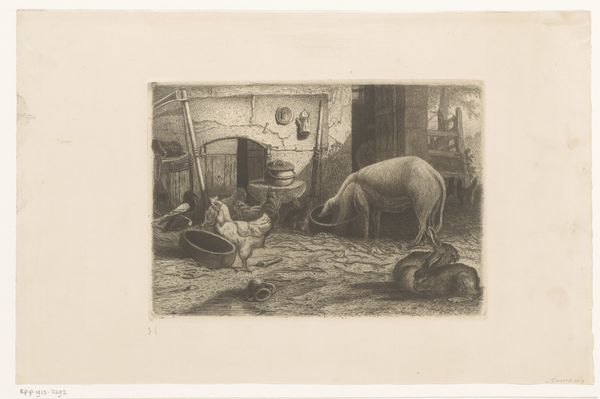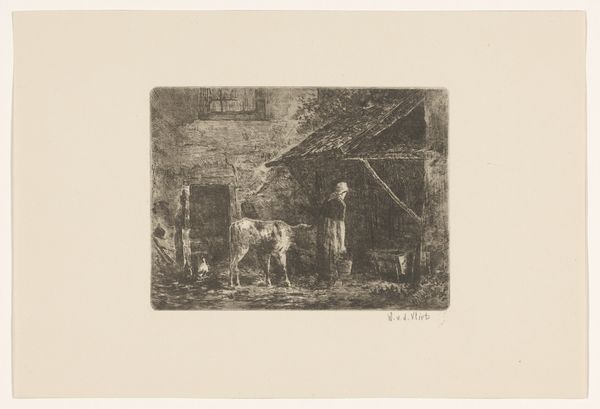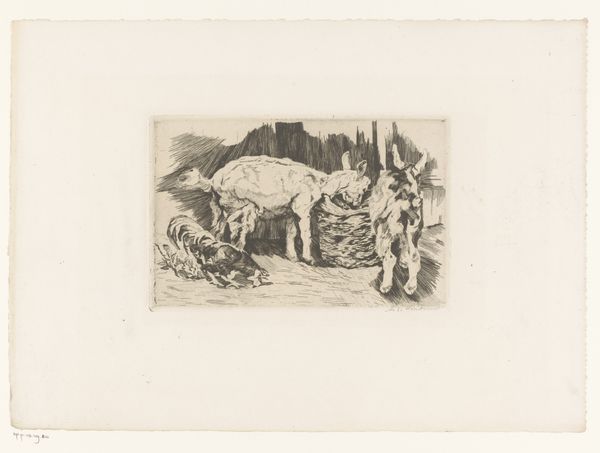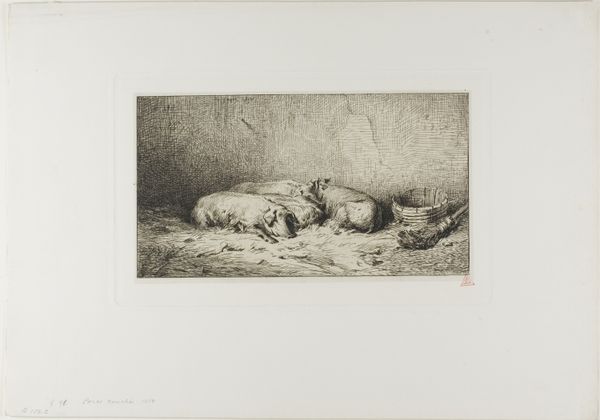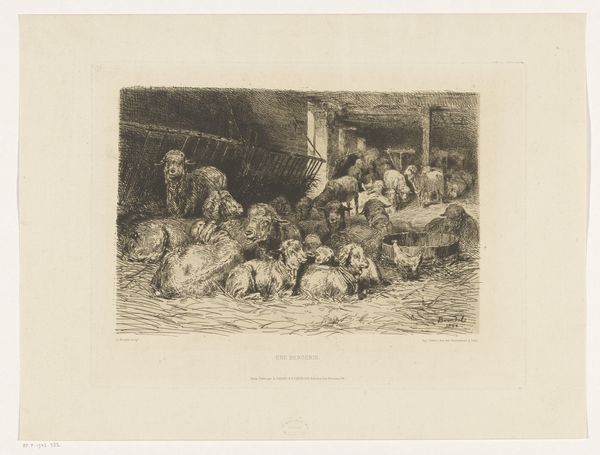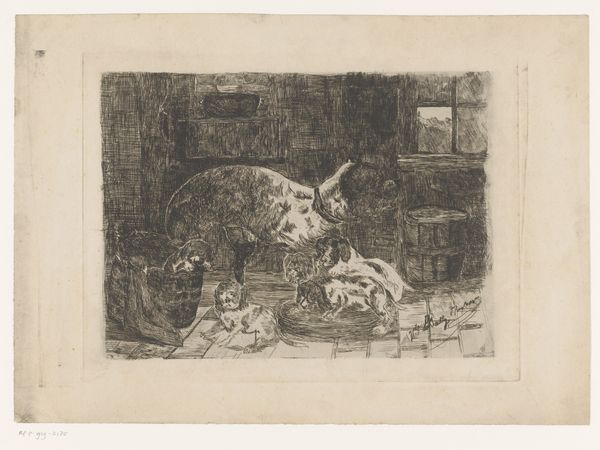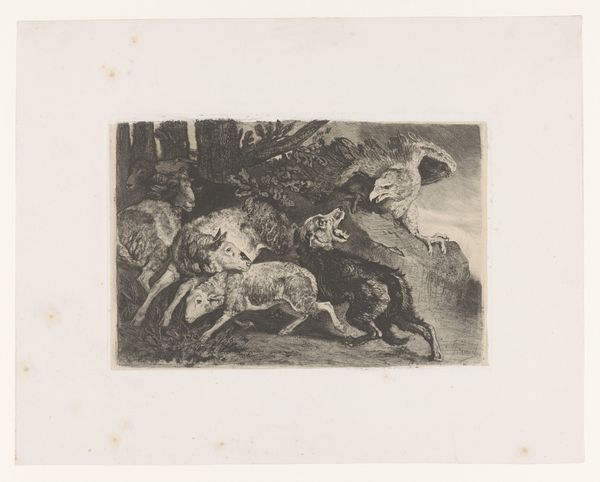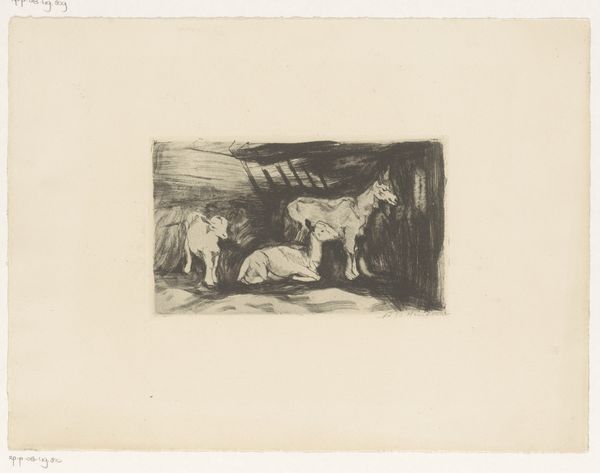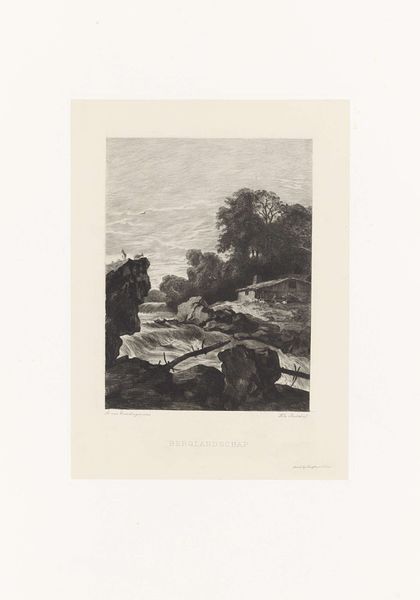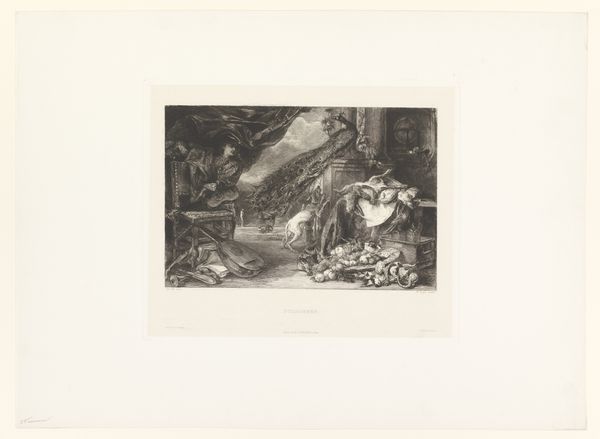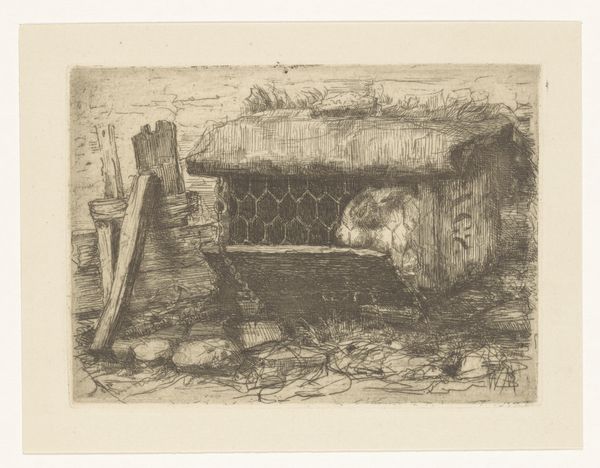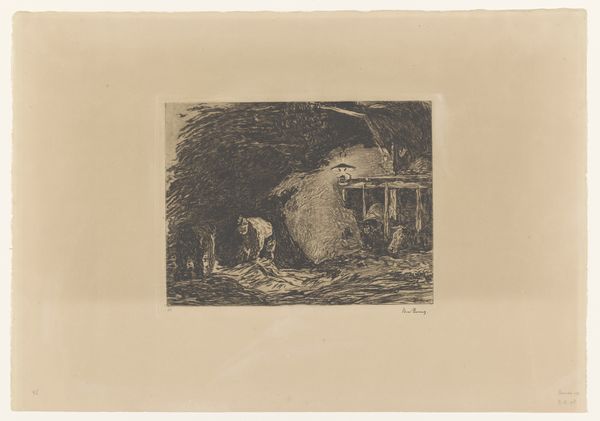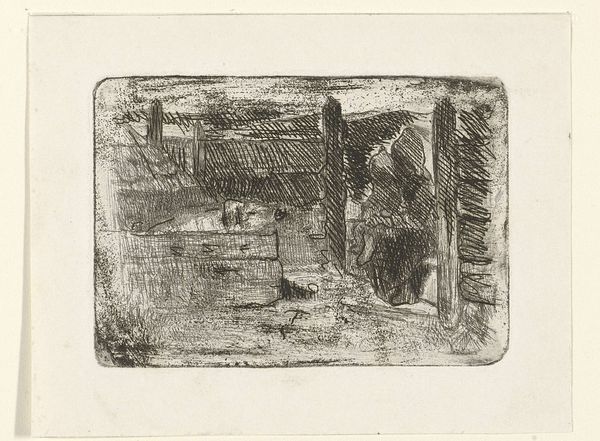
Dimensions: height 181 mm, width 258 mm
Copyright: Rijks Museum: Open Domain
Zacharie Noterman made this etching, "Dog on a Chain and a Duck," sometime in the mid-19th century. Etching involves coating a metal plate with wax, scratching an image into it, and then bathing it in acid to bite the lines, which are then inked and printed. Here, the etched lines create a scene dominated by texture and tone. Note how the density of the marks defines the dog's fur, contrasting with the smoother rendering of the ducks. The composition is simple, yet the contrast between the chained dog and the free ducks suggests themes of captivity versus freedom. Etching, as a printmaking technique, allowed for the reproduction of images. This ties it to the rise of mass media and a growing consumer culture. It made art accessible to a wider audience, far beyond singular paintings or sculptures. The labor involved is considerable, and the circulation, potentially endless. This work, though small, speaks volumes about the changing social context of art in the 19th century. It reminds us that even seemingly simple images have complex material and social histories embedded within them.
Comments
No comments
Be the first to comment and join the conversation on the ultimate creative platform.
